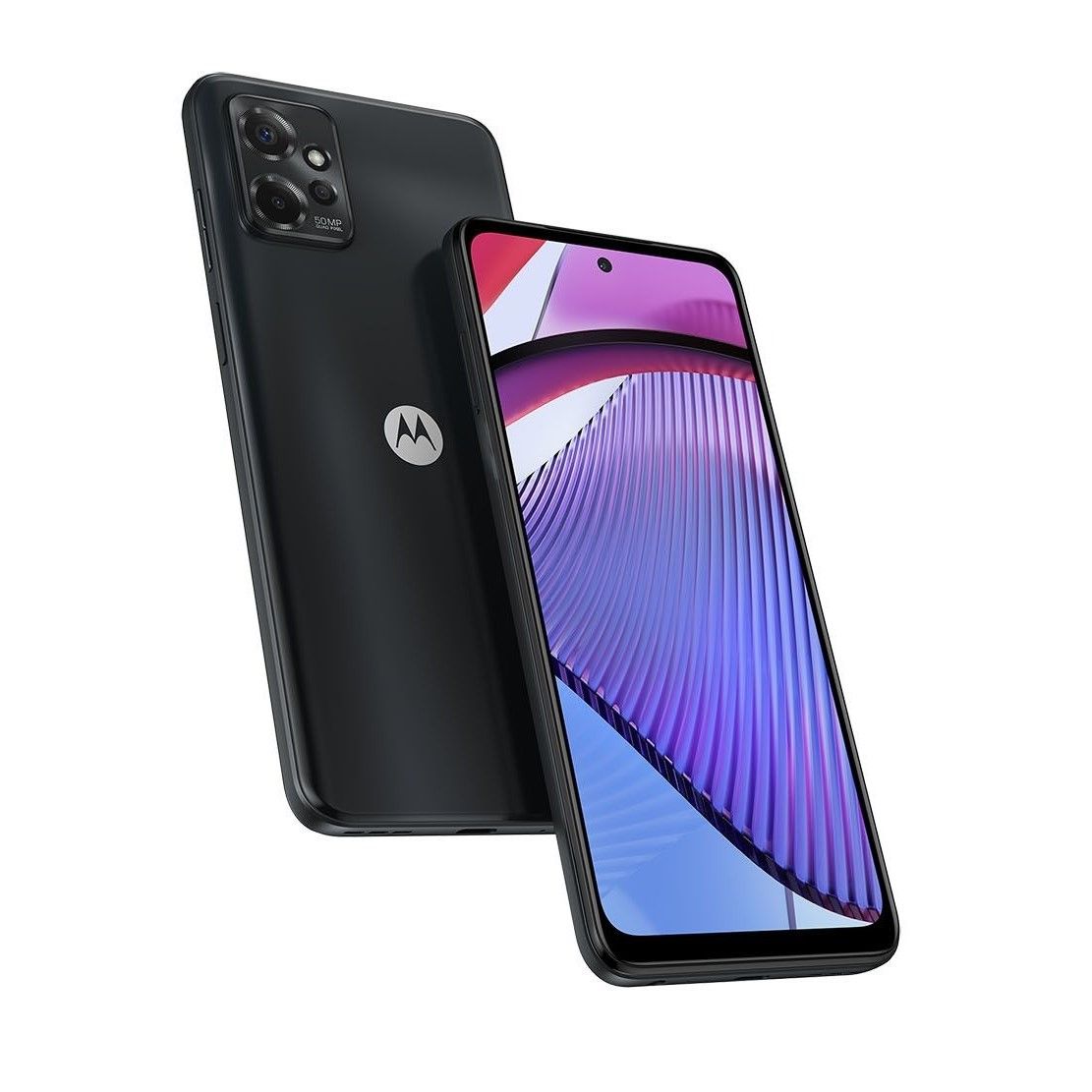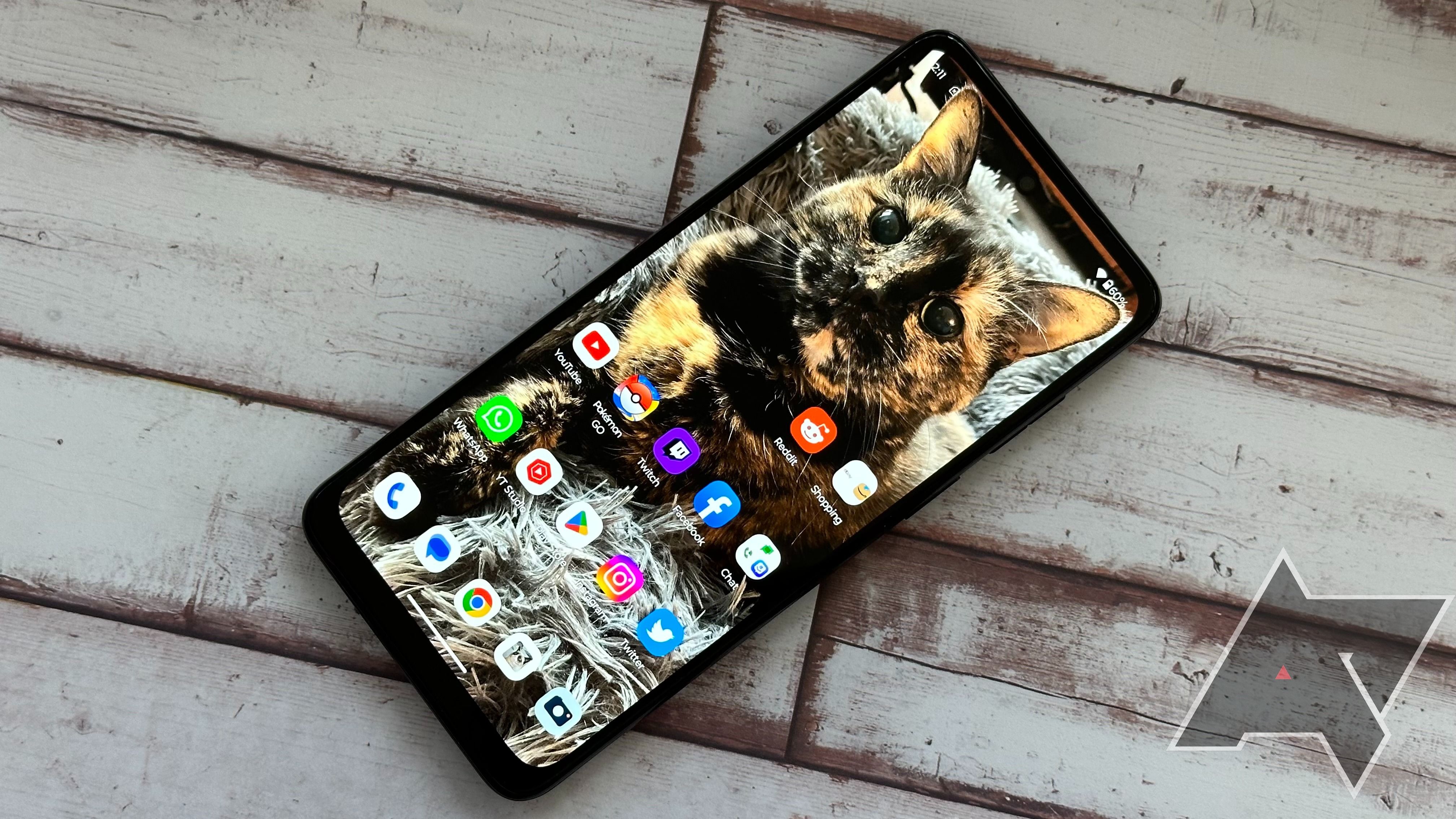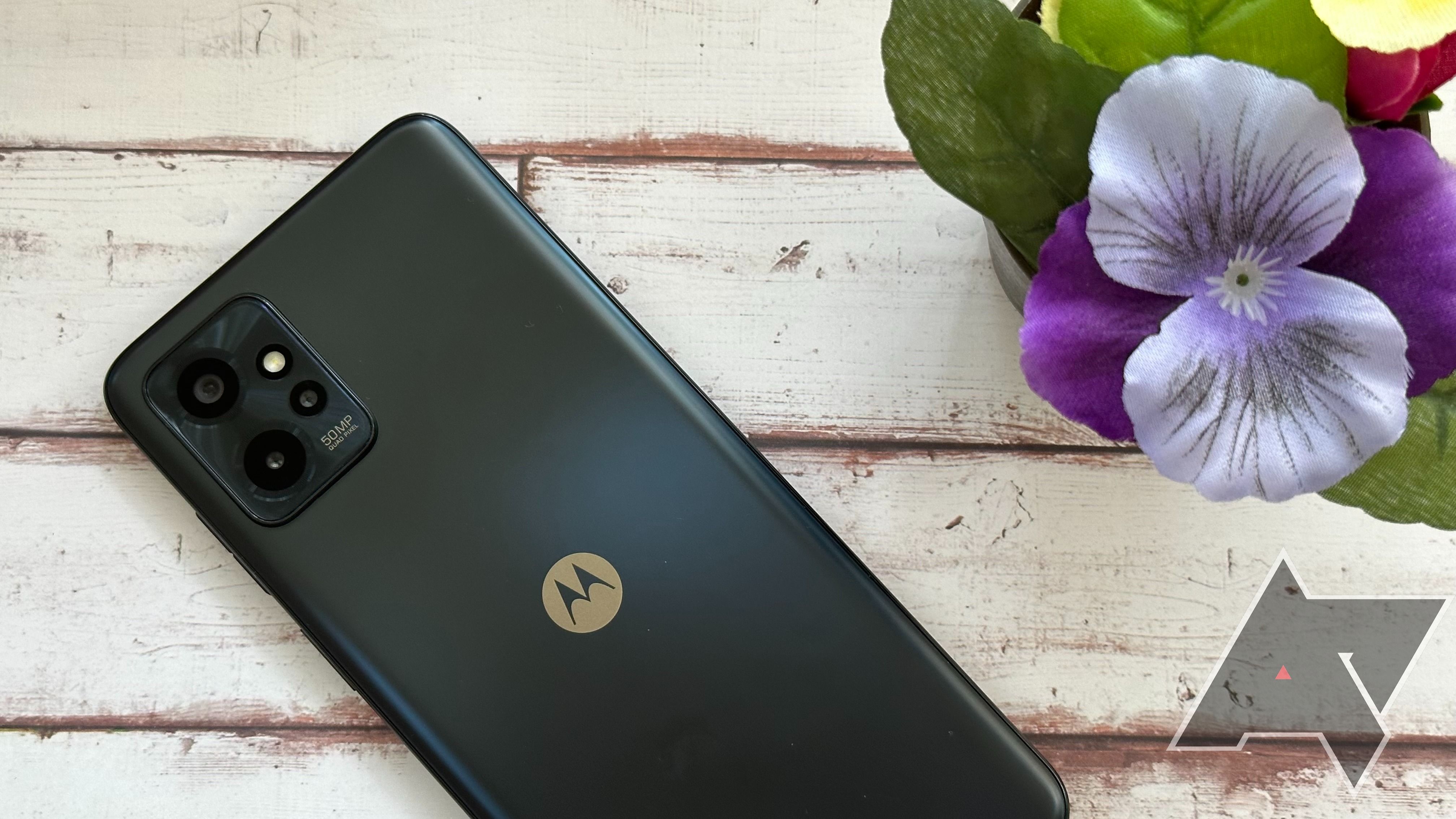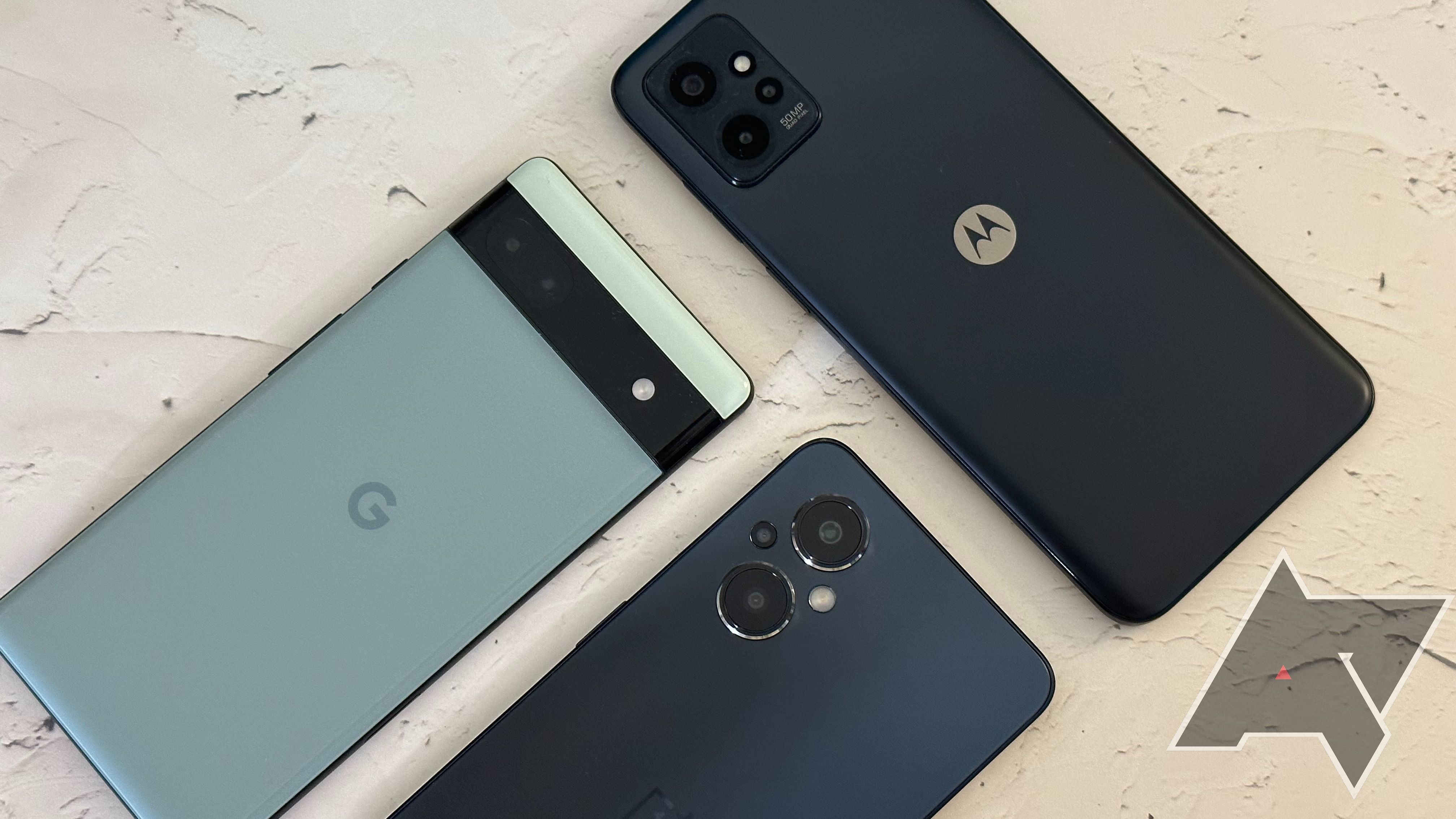Motorola phones have always held a special place in my heart. Whether it was the innovative StarTAC, the sleek Razr, or the BlackBerry-esque Moto Q, the company’s devices were must-haves because of their combination of style and function. As times — and parent companies — have changed, Motorola has moved to a more sensible, restrained approach to its modern smartphones.
With this in mind, the Moto G Power (2023) 5G reminds me more of a Toyota Camry than the Lamborghinis its devices used to be. It’s safe and reliable, does everything you ask it to do, and can get you to where you need to go, but it will never electrify you. And with so much quality competition at the $300 price point, is “safe” good enough to earn your money?

Moto G Power (2023)
While the Moto G Power 5G features impressive battery life, the compromises made elsewhere on the device bring it below the competition at sub-$300.
- SoC
- MediaTek Dimensity 930
- Display
- 6.5" FHD+ 120Hz LCD
- RAM
- 4GB/6GB
- Storage
- 128GB/256GB, expandable up to 1TB
- Battery
- 5,000mAh
- Operating System
- Android 13
- Front camera
- 16MP (f/2.4, 1.0um/2.0um Ultra Pixel)
- Connectivity
- Wi-Fi 802.11 ac, Bluetooth 5.3, 3.5mm headphone jack
- Dimensions
- 163.06 x 74.8 x 8.45mm, 185g
- Colors
- Mineral Black, Pearl White
- Outstanding battery
- Reliable 120Hz display
- Relatively stock Android experience
- Bloatware
- Lackluster gaming experience
- Limited software support
Price and availability
The Moto G Power 5G is available from Motorola and Amazon for $299. Frequent sales bring the price down to $279 in both locations. For that money, you get a model with 6GB of RAM and 256GB of storage. Despite the lack of alternate configurations, you can choose between two colors: Mineral Black and Bright White.
As with most Motorola phones, it's an unlocked model that supports all three national US carriers. If you're looking to take it to an MVNO, you should check out Moto's official website for more info under the specs section near the bottom of the page, as things can get pretty complicated.
Design, hardware, what’s in the box
If I were to describe the design of the Moto G Power 5G as “warmed-over,” it would be disrespectful to leftovers everywhere. If you’ve seen a Moto phone in the last five years, then you are more than familiar with this phone’s plastic back and frame. While it doesn’t feel the most premium, the build materials provide one bonus: weight. The G Power weighs only 185 grams. In a world of chonky smartphones, it was a refreshing carry in my pocket.
Because the design is a little dated, a pair of fan favorites remain. Both a 3.5mm headphone jack and MicroSD card expandable storage are featured on the G Power. On the right frame, you’ll find the volume up/down rocker and the side-mounted fingerprint sensor, which duals as the lock button. The bottom of the G Power houses the USB-C port, the headphone jack, and the first of two Dolby Atmos-tuned speakers — the second one is located behind the earpiece. Speaker performance is about average. They get plenty loud and only really muddle sound at the top end of the volume range.
Gorilla Glass 3 covers the display of the Moto G Power 5G. Maybe I’ve been a bit unlucky, but mine has been prone to micro-scratching, even with careful use. Inside the eco-friendly packaging, I was greeted with the device, a USB-A to USB-C charging cable, a 10W charging brick, and the obligatory SIM tray tool.
Display
The Moto G Power 5G features a 6.5-inch 1080p IPS LCD display refreshing at 120Hz. While it cannot provide the color depth and contrast of an OLED panel, it’s still a decent viewing experience. It’s also a big step up from the 720p 90Hz display of last year’s model. Colors pop off the screen nicely, and the brightness holds up well in sunlight. You will notice color distortion when you move the phone more than a few degrees off-axis, but otherwise, the display does the job.
While YouTube playback looks sharp, you’ll miss an OLED panel most with movies. The screen can’t get dark enough for proper black levels, as they appear as grays in some scenes. It’s not a show-stopper, especially for the price, but it’s worth considering.
On the positive side, the 120Hz refresh rate works flawlessly. It adds a premium quality to the G Power, and I like that the display can be locked to 120Hz in settings. I hate when the only two choices are 60Hz or auto. It can also maintain 120Hz throughout, as I found no drops in frames either in the UI or in apps like Twitter and Instagram.
Software
The Moto G Power 5G runs Android 13 out of the box. Motorola has promised one more major Android upgrade and three years of security updates. It’s not the amount or length of updates that bothers me (even though one major Android update is pretty sad for 2023); it’s the frequency of the updates. Original Moto G Stylus owners will remember it took almost a year for Motorola to roll out Android 11. You’ll get the updates, just don’t try to set your watch by them.
Motorola was one of the first manufacturers to realize that a relatively light skin of Android was the best way to go on budget devices, and the G Power 5G is no exception. All your favorite Moto gestures are here (sometimes it’s just good fun to chop to turn on the flashlight). Despite the lack of an always-on display, Moto still provides one of the best lock screens in the business. I love the ability to check full notifications with a single press, and can even send contextual quick responses in return.
Something that was rather uncharacteristic of Moto was the inclusion of so much bloatware. Usually, bloatware is confined to a few apps that can be uninstalled in minutes, but the G Power 5G’s pre-installed apps annoyed me for almost an hour. Its folders containing games and entertainment apps are nothing more than a vehicle to get you to download recommended software.
A pre-installed generic news widget asks for your permission to collect data for sale — no thanks. I understand this is a budget phone, and these apps help subsidize the experience, but that doesn’t mean I like spending my time removing ads from my smartphone, especially when they are so intrusive.
Performance
At the heart of the Moto G Power 5G, you’ll find the MediaTek Dimensity 930. It won’t turn many heads with its performance, but it gets the job done. I could use Twitter and Facebook in split-screen mode without much of a performance hit. Instagram scrolling was a breeze, and flipping through cat videos on TikTok was perfectly enjoyable. Temper your expectations, and you won’t be disappointed by the performance. You’ll encounter the occasional hiccup closing apps, but otherwise, the lag only starts when you turn to gaming.
If you are a gamer, you’ll want to avoid the Moto G Power 5G. Genshin Impact ran on low settings, and slowdowns were frequent. It was playable, but expect to run into performance issues if lots of enemies are on screen. Call of Duty Mobile suffered a similar fate. Pokemon Go and other more casual games will perform the best, so if your gaming is limited to cleaning your neighborhood of Pikachus, you’ll be fine.
At the end of the day, it wasn’t a processor designed to go above and beyond. Mostly, I’ve been impressed with the MediaTek chipsets in the last 18 months. They provide just enough power for daily tasks while preserving maximum battery life — which is considerable.
Battery life
If the Moto G Power 5G has a major competitive advantage, it is battery life. The last two true battery beasts I’ve used have come from Motorola: the Moto G Stylus 5G and the G Power 5G. The power-efficient Dimensity 930 paired with a 5,000mAh battery produces stellar results. I could easily get close to 9 hours of screen-on-time without taking any battery-saving measures. The standby drain was almost non-existent, resulting in a legitimate two-day battery experience.
I’m glad the battery can last the course because recharging in a hurry isn’t an option. The 10W included charger is quite slow, and the G Power itself is only capable of 15W charging. You'll need to make sure you keep an eye on your battery level if you're headed out for a late night, as recharging takes some patience.
Camera
The Moto G Power 5G features three camera sensors: a 50MP main shooter, a 2MP macro lens, and a 2MP depth sensor. Let’s save everyone some time and call it what it is: a single-camera system. If you’re nostalgic for photos your Palm Pre used to take, the macro sensor is for you — the images are soft, dark, and without much detail. A 16MP camera handles selfies.
In ideal lighting, you’ll be able to get a decent image from the 50MP main camera. It had a tendency to overexpose photos, but it will do the job. In anything less than ideal lighting, the Moto G Power suffers. Images get soft, and the camera system has a habit of trying to switch you into night mode in situations that absolutely don’t call for it. I would be taking a photo in a decently lit room, and it would have me hold the camera steady while night mode went to work, resulting in a blurry mess.
Portrait mode didn’t fare much better. Selfie edge detection, even in good lighting, was downright terrifying. It took me several takes even to get a selfie worth showing. The main camera portrait mode fared only slightly better with mushy edge detection in anything but direct sunlight.
If you take a lot of photos, your only hope with the Moto G Power 5G is a decent Gcam port somewhere down the line. Otherwise, if you’re a shutterbug, the Pixel 6a at $350 is the way to go.
Competition: What else is out there?
Despite the camera issues, the Moto G Power 5Gs real problem is when you look outward. The G Power is by no means a bad phone, but the bar for sub-$300 devices moved quite a bit while Moto wasn’t looking.
The Google Pixel 6a still provides the best value in the category with top-notch support, a brilliant camera, and blazing-fast raw performance. At $350, the package Google put together is spiritually the same as what Moto is trying to do with the G Power 5G, but a lot more effective.
The OnePlus Nord N20 also counters with its flagship-quality OLED display, great battery life, and sleek design, all for $249. It becomes difficult to recommend the G Power when these are both available for roughly the same price.
Should you buy it?
The Moto G Power 5G is a phone that brings its hardhat and lunch pail to work every day. Much like the Toyota Camry, it will do the job without giving you too many frills. Unfortunately, there are other phones in the same price range that do have the ability to electrify you while still being just as reliable an experience.
If you love a relatively stock Android experience but are allergic to Pixels for some reason, pick one up. Also, if battery life is your main deciding factor for a smartphone, it might be worth a look. As for the rest of us, I’d suggest spending your money elsewhere.

Moto G Power (2023)
While the Moto G Power 5G features impressive battery life, the compromises made elsewhere on the device bring it below the competition at sub-$300.








